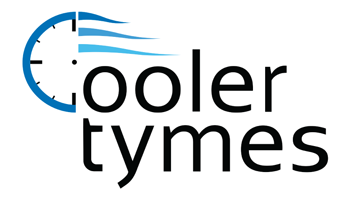
The Nest thermostat is one of the best-selling smart thermostats on the market today. And for good reason. It learns your temperature preferences and makes an energy-efficient schedule to match. And through geofencing with your phone, the Nest Learning Thermostat and Nest E are aware of when you’re at your house or out and about and can adjust temperatures to help you save even more.
The Nest is compatible with a vast range of 24-volt heating and cooling systems, but it’s always a smart idea to use the Nest thermostat compatibility checker before purchasing one. Don’t forget to talk with your energy supplier for valuable rebates, because you could be able to get a Nest for free or close to it.
Once you’ve confirmed it’s compatible, you can either wire it on your own or hire a HVAC specialist like Cooler Tymes LLC. If you’re putting it in without help, you’ll see a terminal for the C-wire, or common wire. This wire is only used for powering your thermostat. If your residence or HVAC system is older, you might not have one of these wires. Most of the time, Nest says this isn’t a setback since the thermostat can get ample power from other heating and cooling wires.
In some instances, your heating and cooling system might have to have that C-wire. And here’s why.
Why Your Nest Keeps Losing Power and Other Problems
The Google Nest Thermostat is better than outdated programmable thermostats that rely on a combination of wiring and AA batteries for power. It has a rechargeable lithium-ion battery and wiring to connect to Wi-Fi, power its digital display and operate your heating and cooling system.
8 Common Nest Thermostat Issues
If it can’t draw adequate electricity, Nest says you could encounter some of these problems:
- Bad battery life.
- Thermostat motion sensing won’t operate.
- Your thermostat every now and then disconnects from Wi-Fi.
- Your system abruptly turns on or off, or won’t shut off.
- Your system is producing strange noises, such as chattering, stuttering, clicking or thumping.
- Heating or cooling is short cycling, or frequently turning on and off in a short period of time.
- There is a delay notification on your Nest thermostat’s screen, along the lines of “heating is delayed for 2:30 minutes.”
- The system fan is continuously working, won’t switch on or turns off and on frequently in a short period of time.
You may worry something is suspect with your heating and cooling system, but if you just got the Nest, we advise you begin with your thermostat right away. This is especially true if the weather is moderate, and you haven’t been relying on your heat or air conditioning frequently.
Our Specialists Can Solve Nest Thermostat Troubles
If you’ve tried Nest thermostat troubleshooting without help but can’t solve the issue, a smart thermostat pro such as one from Cooler Tymes LLC can support you. We can identify the problem and install a C-wire, if required.
Smart thermostats such as the Nest are made to make your life more convenient, through automatic energy-efficient programming and the ability to keep an eye on temperatures while you’re out. It’s an annoying experience when yours won’t run correctly, but our heating and cooling pros at Cooler Tymes LLC can take care of the problem fast.
If you’re running into unexplained heating and cooling behavior with your new Nest, call us at 623-208-6444 to book your appointment right away.
